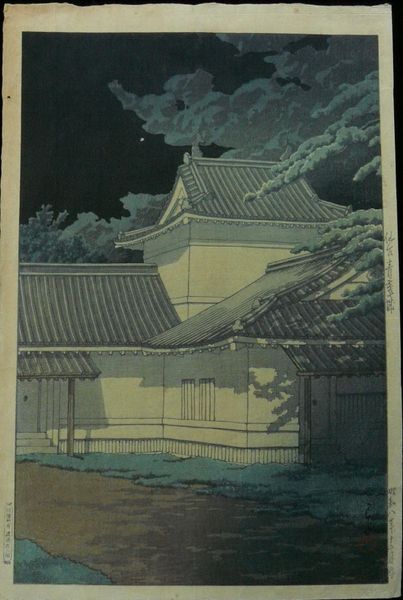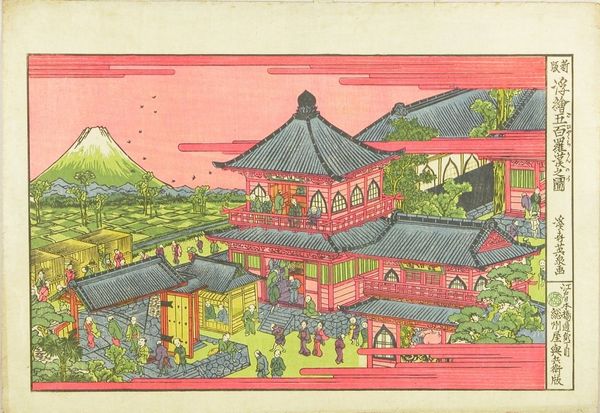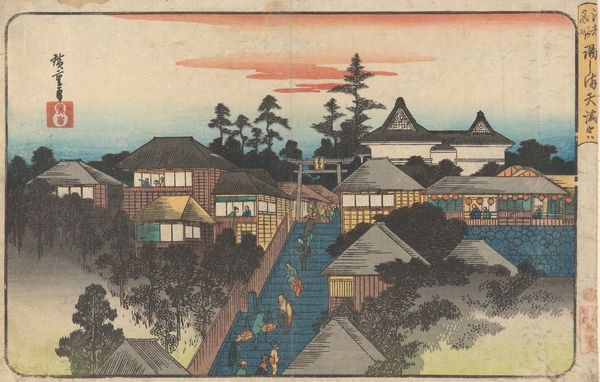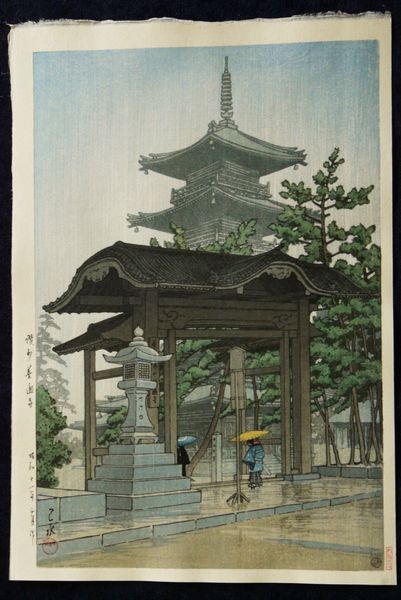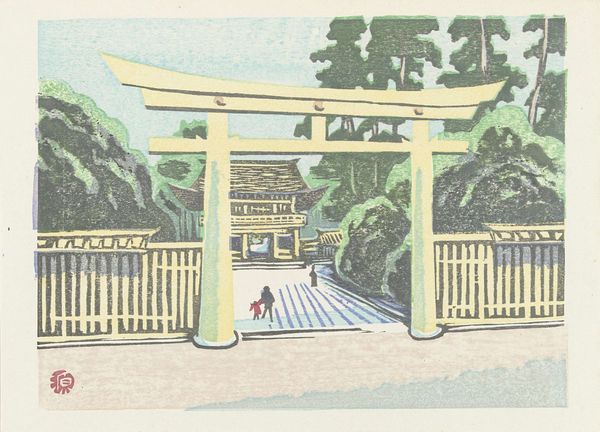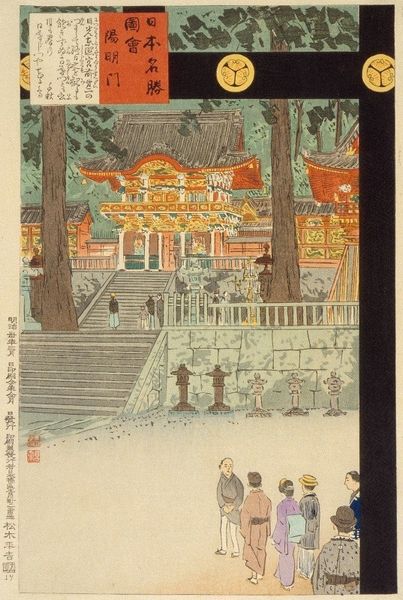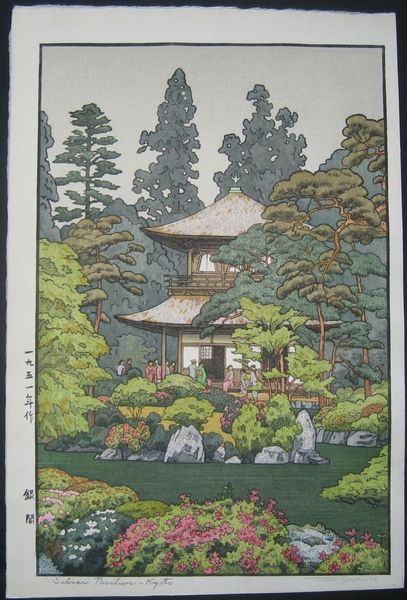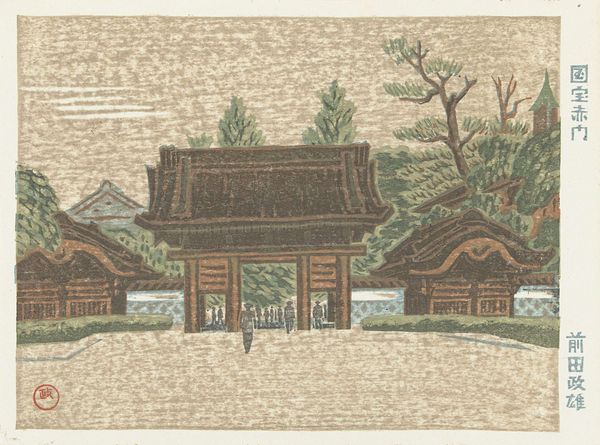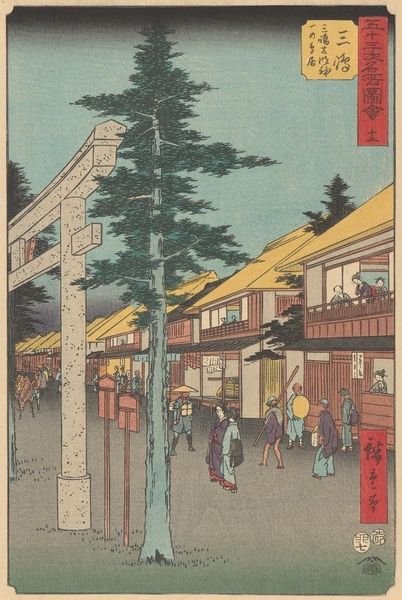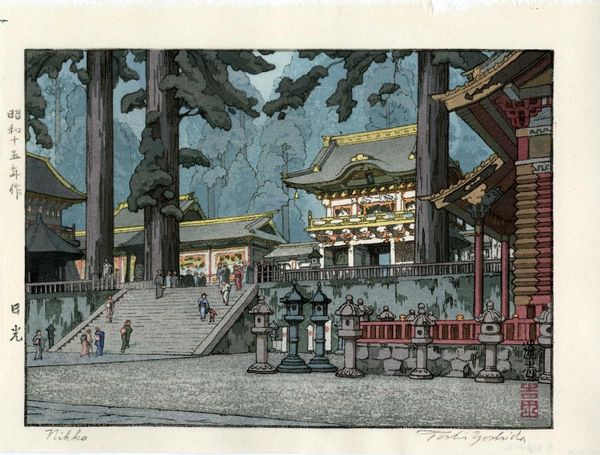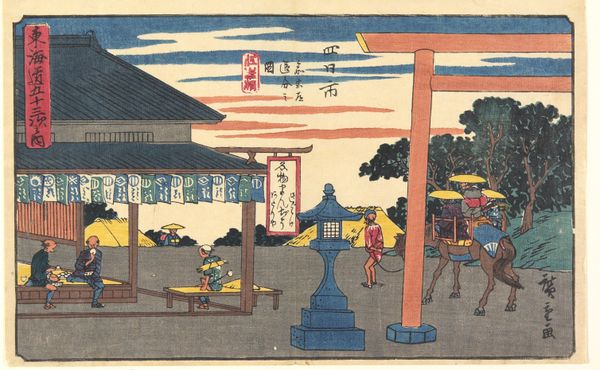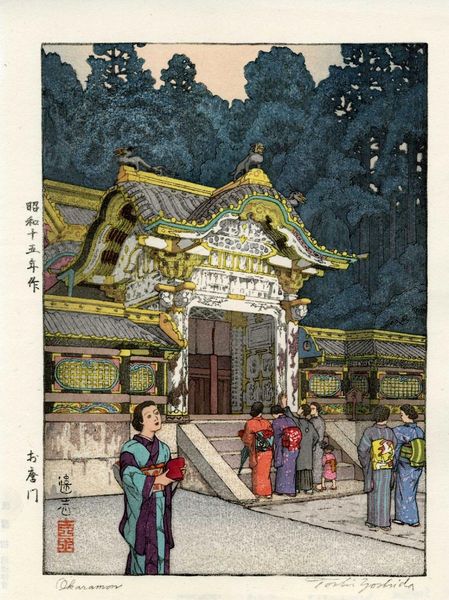
tempera, print, woodcut
#
tempera
# print
#
asian-art
#
landscape
#
woodcut
Dimensions: height 198 mm, width 273 mm, height 293 mm, width 368 mm
Copyright: Rijks Museum: Open Domain
Editor: This is "Zojoji Temple," a tempera and woodcut print created in 1945 by Gen Yamaguchi, and it’s currently held at the Rijksmuseum. It feels serene, yet also somehow monumental with the temple looming in the background. How do you interpret this work, especially considering when it was made? Curator: Given its creation date, 1945, we need to consider the social and political context of Japan at the end of World War II. The depiction of a temple, normally a place of peace and reflection, during such a tumultuous time suggests a longing for stability and perhaps a visual resistance against the war's destruction. What role do you think the medium itself – a woodcut print – plays in communicating this message? Editor: Well, woodcut prints have a history of being accessible to the masses, so maybe it's about creating a shared sense of hope or collective identity amidst the chaos. It's also interesting how the artist frames the temple with the trees – is there anything significant about that compositional choice? Curator: Indeed. The trees act as a framing device, pulling our eye towards the temple but also reminding us of the natural world, which endures despite human conflict. Perhaps it’s a commentary on the enduring strength of cultural institutions amidst societal upheaval. The perspective feels very carefully considered, almost stage-like. Does that add to the meaning for you? Editor: Absolutely. It gives it a sense of formality and timelessness, as if the scene is presented for posterity. It's as though Yamaguchi is saying, "Even through war, this remains." It makes you consider the public function of art and memorialization. Curator: Exactly! And how art can be a powerful form of silent protest. Editor: This makes me look at the print with fresh eyes, appreciating its significance far beyond its aesthetic appeal. I initially just saw it as serene landscape. Curator: Precisely the point. It prompts reflection on the relationship between art, history, and collective memory.
Comments
No comments
Be the first to comment and join the conversation on the ultimate creative platform.
